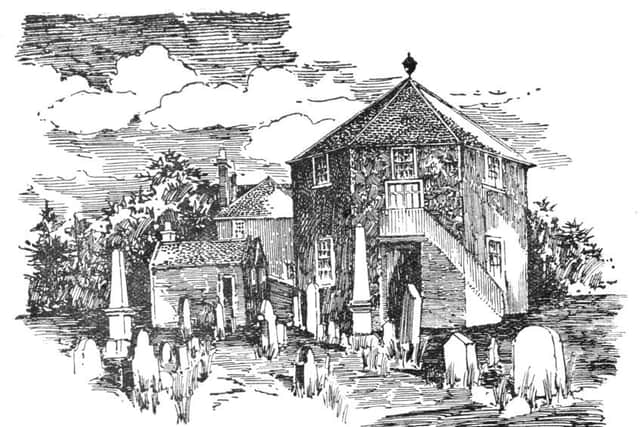The Tattie Kirk '“ Falkirk's most unusual building


It therefore came as a surprise to find that not one of my 270 articles for this column tells the story of what it was and how it came to be there. I have written before about the graveyard which has survived against all the odds but nothing much about the building itself. Time to put that right I think!
The story begins in the early years of the 18th century when the leading lights in the Church of Scotland began to fall out over matters related to the practice of the church and its relationship with the state. These disagreements which seem small beer to us today certainly raised great passions at the time. The first break came in 1733 when the minister of Stirling, Ebenezer Erskine, led a campaign against state interference in the choice of parish ministers. He and a group of like minded ministers went on to form a new church and soon there were ‘Erskine’ congregations across Scotland including Falkirk.
Advertisement
Hide AdAdvertisement
Hide AdBut once a break is made other cracks often appear. In 1747 a question arose within the new ranks: Was it OK to swear what was called the ‘burgess oath’ which included a promise to support the ‘true church’? Those who refused to take the oath could be disbarred from public office. Rev. Erskine said ‘yes’ but some others took the opposite view. They walked out and formed another new church which was referred to for obvious reasons as ‘Antiburgher’. The rest (the ‘Burghers’) remained in their Silver Row building and the new group, after a brief stop in Callendar Riggs (and yet more disputes), acquired land near St Crispin’s Place in 1782 and erected a temporary building. Two decades later in 1806 the congregation decided to build a new church and the Tattie Kirk was the result.


We have no idea who designed the building and the suggestion that it was octagonal to ensure that ‘the devil had no corner to hide in’ is amusing but not very likely! More convincing is the notion of the centrality of the preaching of the word with the pulpit as the focal point of the services. The sanctuary was on the first floor with seating for 580 which is astonishing given the appearance of the building from the outside. It cost £850.
By 1879 the congregation by then joined with other splinter groups and part of the United Presbyterian Church moved to a fine new building in Grahams Road where the retail park is today leaving graveyard and kirk behind. The Grahams Road church was demolished in 1990.
The kirk was sold off and used for a variety of purposes and there have been many theories about the name ‘Tattie’. Was the church built on a potato field? Did the minister get part of his stipend in potatoes? The problem here is that the name does not appear until after the congregation was gone. It may therefore come about because the old building was used as a potato store. Or maybe it fell into such a state of disrepair that somebody said “Something needs to be done about that old tattie kirk!” For many years it was part of Sime’s tool shop and today it has been restored as a beauty parlour. We can all be grateful that this part of our local history has survived and is secure for future generations to argue about its strange shape and peculiar name.